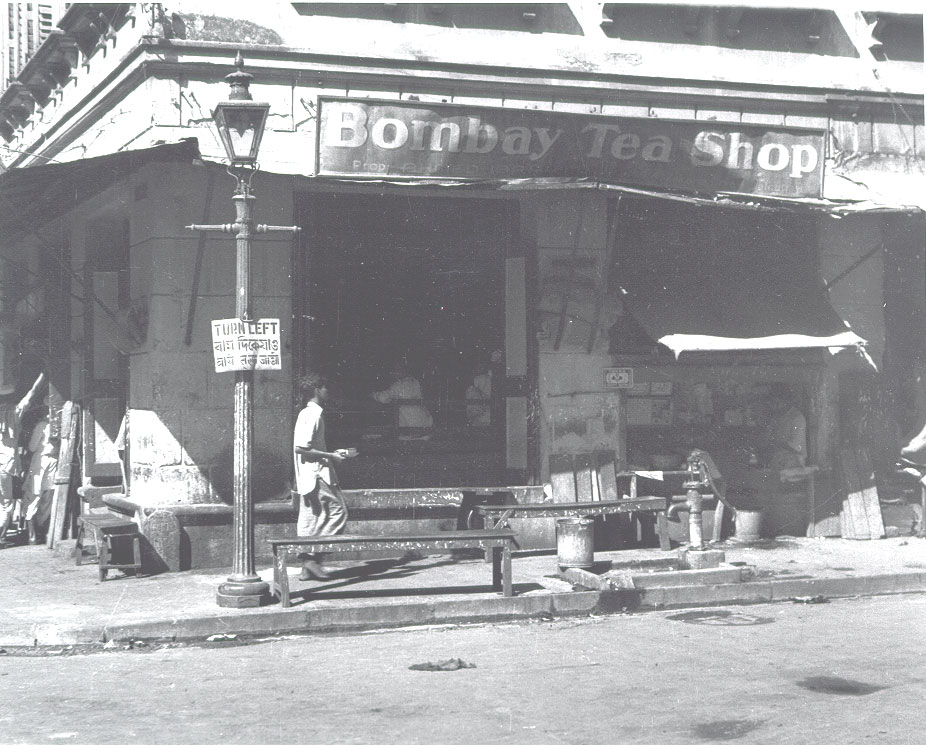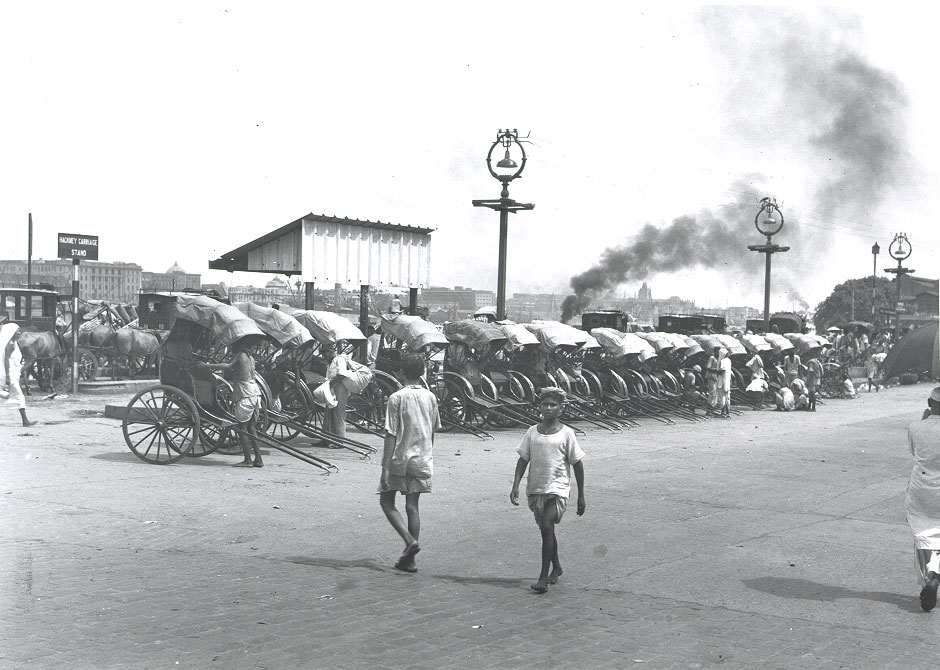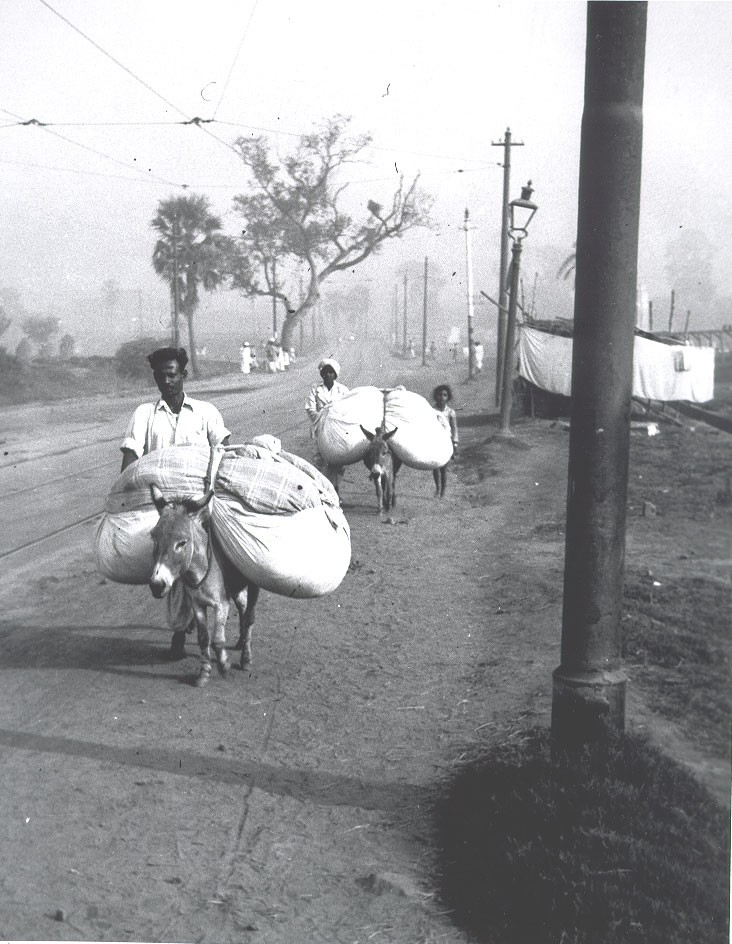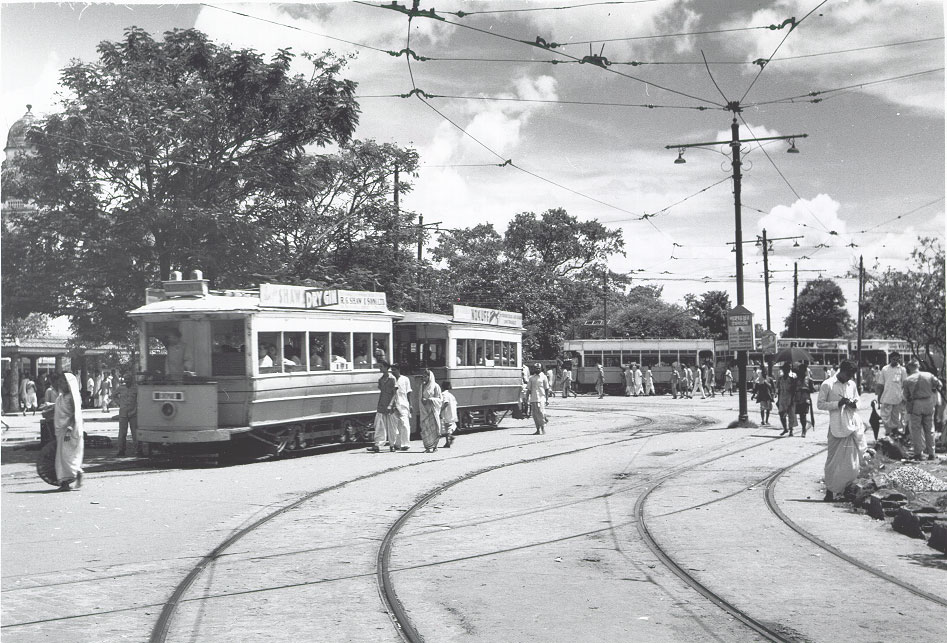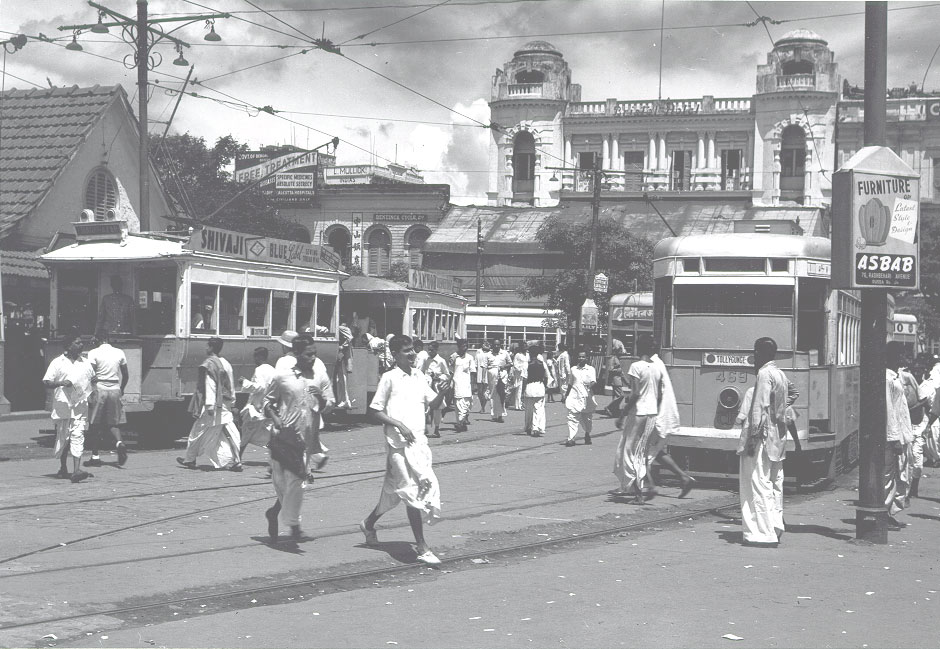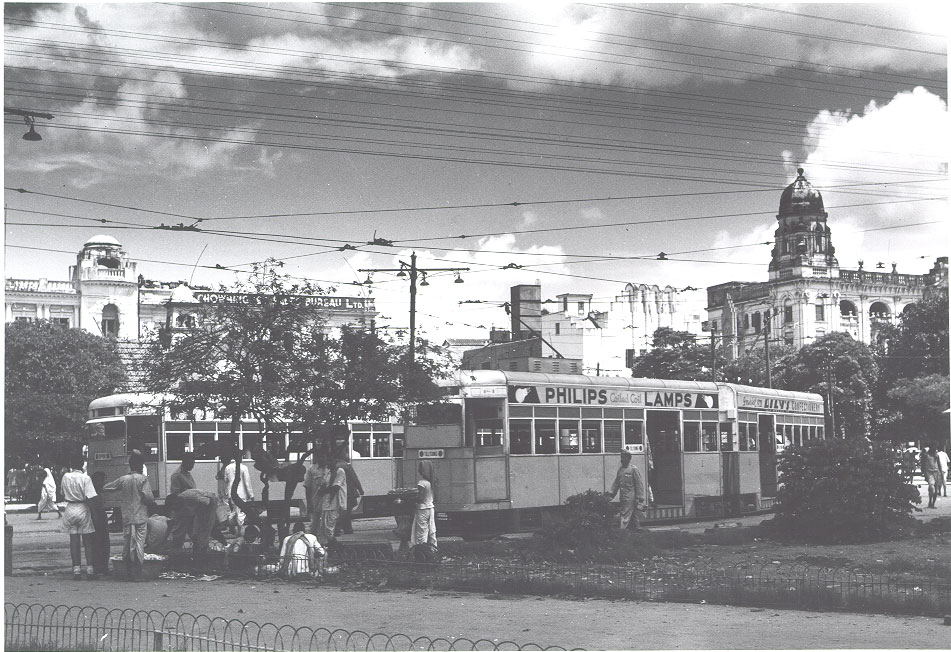The Hensley Photo Library, University of Chicago, is a rich collection of photographs of Calcutta from 1943-44. They are a delight to browse through anyway. After the lamp-post in one of the photographs caught my eye, I kept looking for more varieties in each photograph.
Hope you have fun going through the rest of the photographs in the Collection.
Yes, the sign-board says Bombay, but this is obviously from Calcutta. The archivist also says so.
The first one is of the Howrah Station. The second is at Sealdah. Are the lamp-posts different because they are meant to light up different kinds of spaces? The first sheds light on rickhsaw or other public transport stands, while the latter is street-lighting. The Sealdah Station looks very different now. I do not know how and when the transition took place. It seems Hensley may have caught another photographer in the act: what else could the person squatting in the foreground be doing?
This early morning scene echoes the lamp-post in the first photograph (in this post). You can almost smell the groggy freshness in the air. For the lamp too it seems too early to raise its head up absolutely straight. It's lazily tilted. Donkeys have become a rare sight in the city. A few days back I heard that the last donkey in Shantiniketan has died. Which broke my heart. Urbanisation and mechanisation are difficult conditions to survive in for a creature whose breeding, I suppose, came out of a largely utilitarian motive. Apart from carrying sundry load, they were also useful to dhoba-s or launderers (which may well be the subject of this photograph). They aren't very popular otherwise, are they? But they aren't even close to being endangered, and that is a relief.
The last three here are all from the Tram Terminus. The first one has two lamps to a pole, while the other two have four to a pole. The last photograph I found quite striking, what with the monsoon clouds in the background.
P. T. Nair tells us that while Harrison Road was the first to receive electric lighting around the turn of the century, it was not until 1914 that major sections of the city came to be illuminated thus. With an increase in the number of buses and trams plying the roads, the CESC started paying greater attention to street-lighting around 1927. Up until the 1950s, we are told, there were 4 classes of electric lights: i) 75 watt single lamps for very narrow passages; ii) 100 watt single lamps for lanes with little motor traffic; iii) 3-75 watt cluster lamps for roads with moderate traffic; and iv) 3-100 watt cluster lamps for major roads where the traffic was heavy. The height of the last type would range between 25 and 30 feet, and they would be separated from each other by about 150 ft.
